By 1914 the United States had been the largest economy on earth for about 25 years. In order to allow monetary expansion the fed would redeem national currency from a bank and issue Federal Reserve bank notes instead. The money was backed by the same bonds but the fed could issue more currency at will by issuing more of its own bonds. The plan didn't work. Because of this, series 1915 notes are scarce especially in $10 and $20 denominations.
The reverse vignettes of the $5, $10, $20, and $50 are also used on 1914 Federal Reserve Notes.
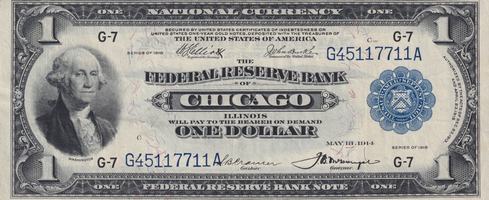
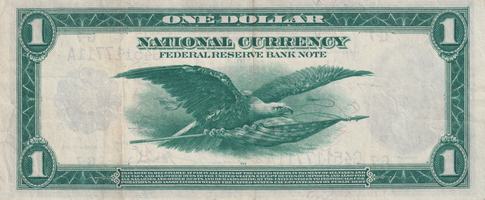
1918 Portrait of George Washington. Reverse has vignette of Eagle carrying the flag.
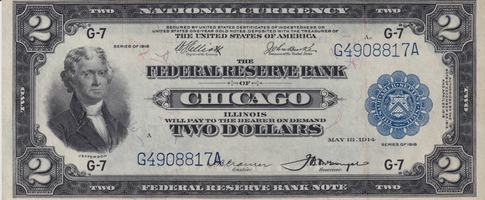
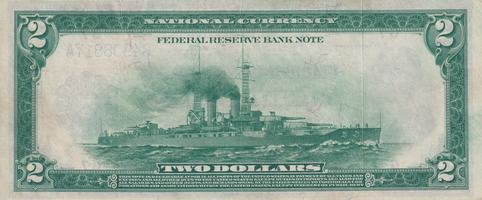
1918 Portrait of Jefferson. Reverse has vignette nicknamed “The Battleship”. The ship has never been identified. 1918 was the last year that they produced large $2 bill notes.
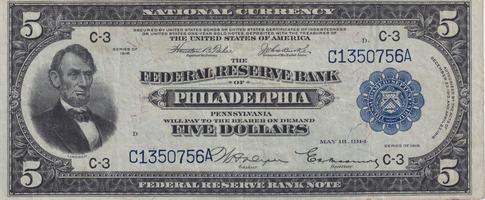
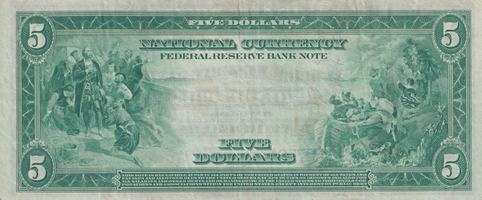
1918 Portrait of Abraham Lincoln. Reverse features a scene from the painting “Columbus's Discovery of Land” showing Columbus and members of his crew aboard the flagship Santa Maria as they approached the New World for the first time in October 1492. The right side features a scene from the painting "The Landing of the Pilgrims" showing the Pilgrims landing ashore when they arrived from England in 1620.
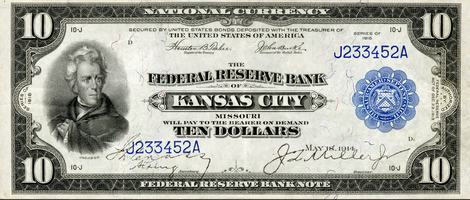
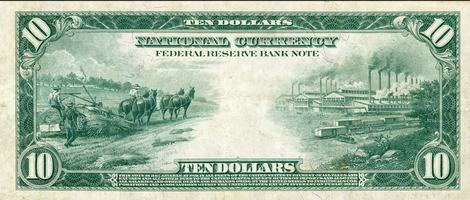
1915 Portrait of Andrew Jackson. Reverse shows plowing a field on the left, and a factory on the right; symbolizes American resources and production.
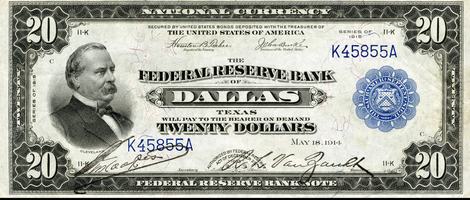
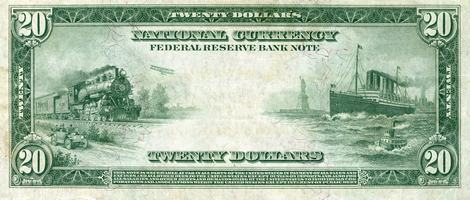
1915 Portrait of Grover Cleveland. Reverse shows modes of land, sea, and air transportation.
The left side has images of industry of the time period including a steam locomotive beside which is a motor car driving down a road. To the right of that, you'll notice a propeller plane flying above trees. The right side has large steamship and steamboat with the Statue of Liberty in the background. Picture of: Locomotive, automobile, passenger liner, and biplane; symbolizes the modern technology of transportation in 1914.
The $20 note was issued by only 5 of the 12 Federal Reserve Banks.
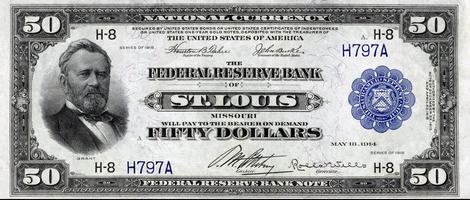
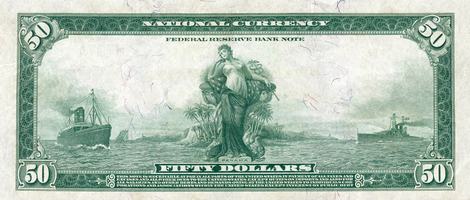
1918 Portrait of Ulysses Grant. Reverse shows Isthmus of Panama with steam ships on both sides representing the Atlantic and Pacific Oceans. The Panama Canal was opened on August 15, 1914.
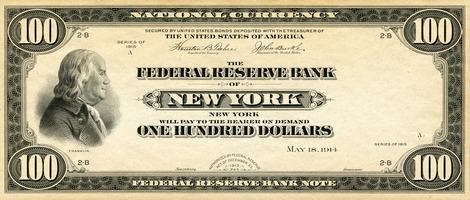
1915 Portrait of Benjamin Franklin. First year Franklin was displayed on a one-hundred dollar bill.
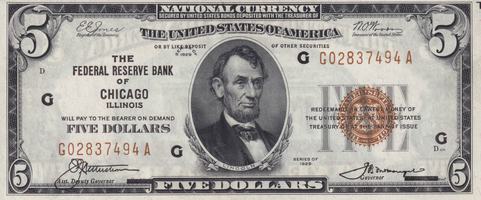
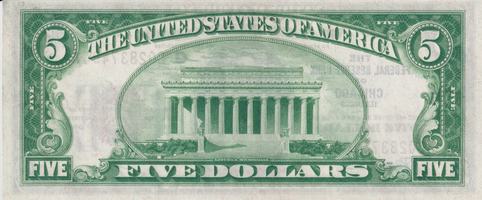
1929 Portrait of Abraham Lincoln. Reverse vignette of Lincoln Memorial.
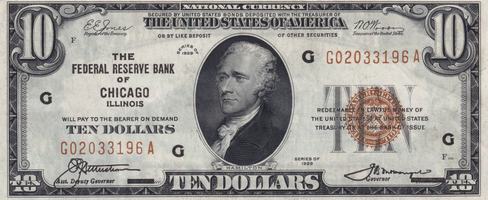
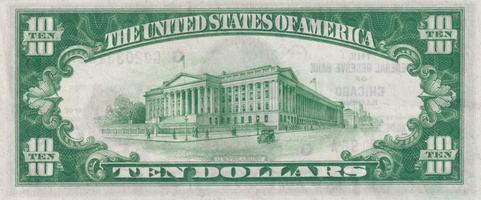
1929 Portrait of Alexander Hamilton. Reverse vignette of U.S. Treasury.
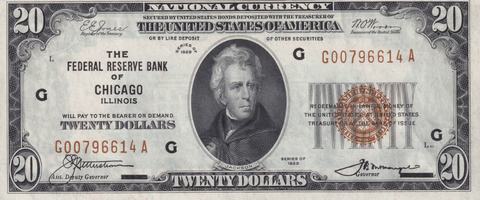
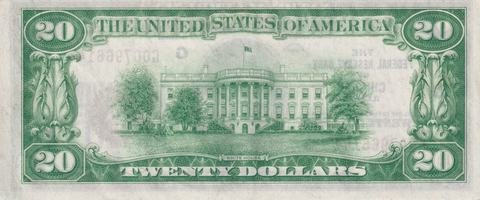
1929 Portrait of Andrew Jackson. Reverse vignette of White House.
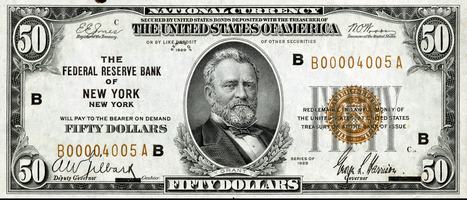
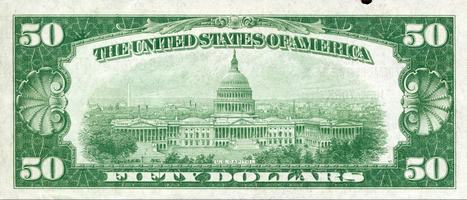
1929 Portrait of Ulysses Grant. Reverse vignette of U.S. Capitol.
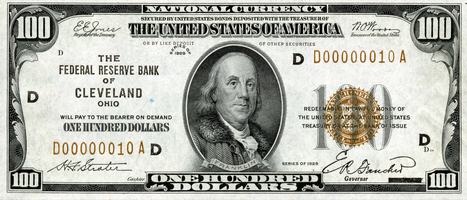
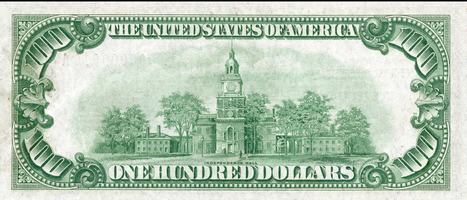
1929 Portrait of Benjamin Franklin. Reverse vignette of Independance Hall.